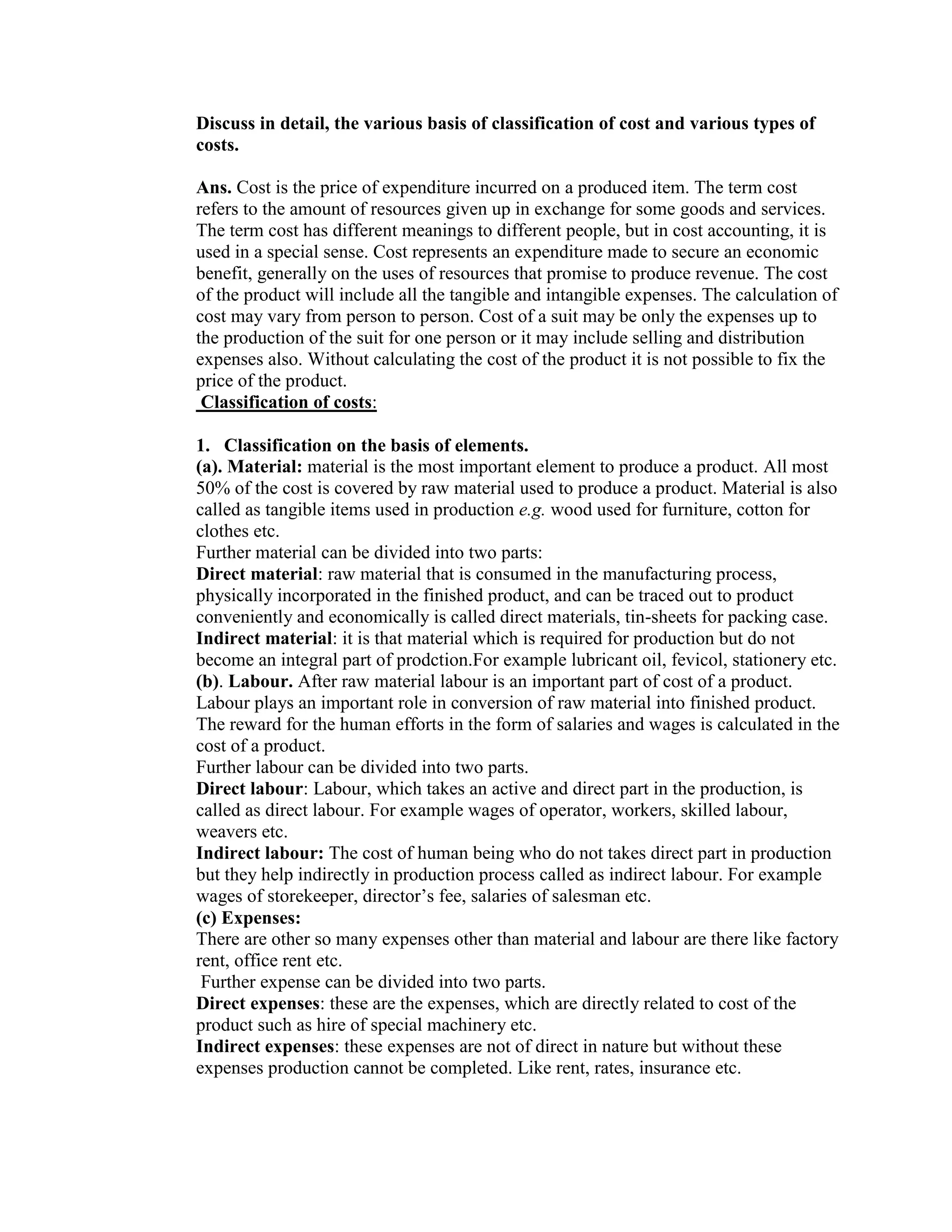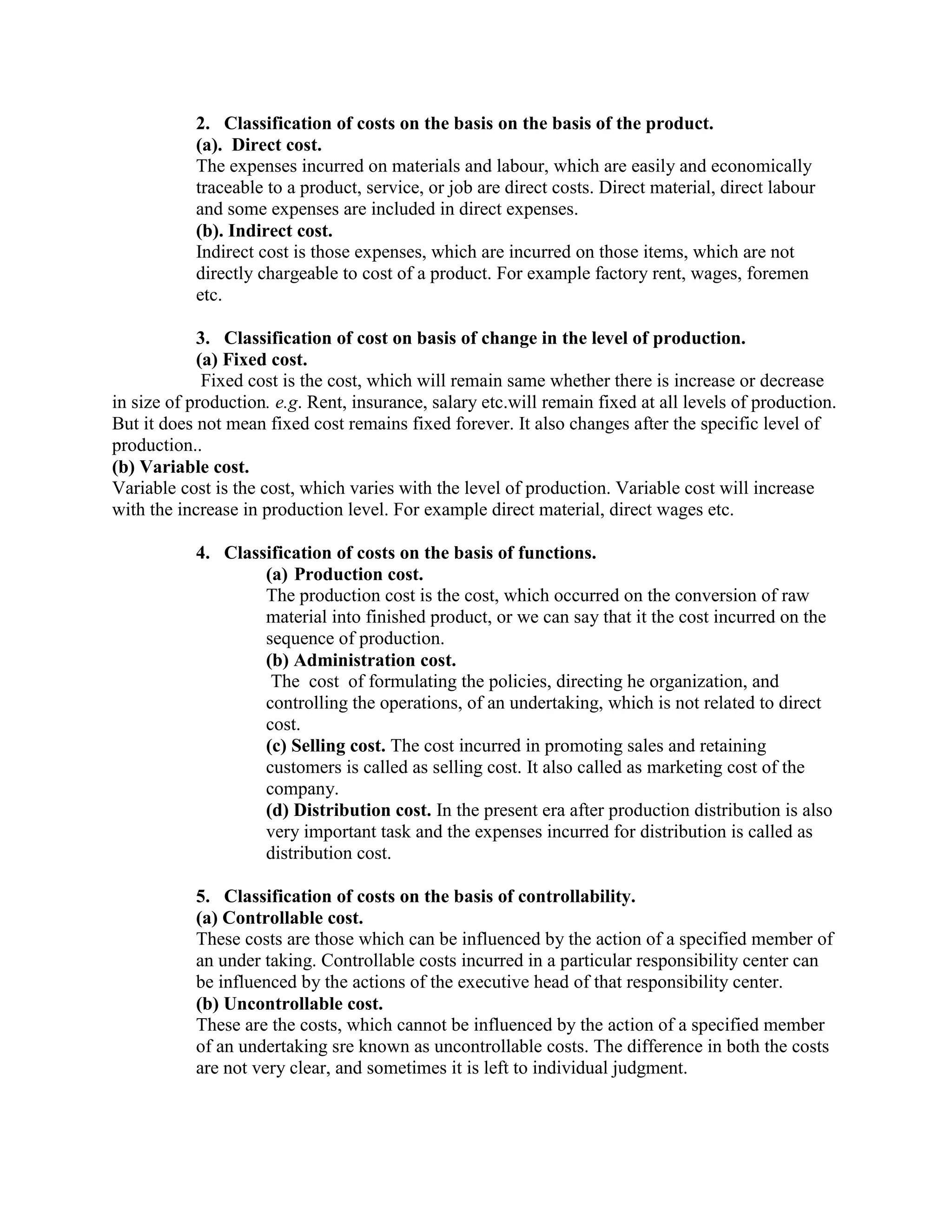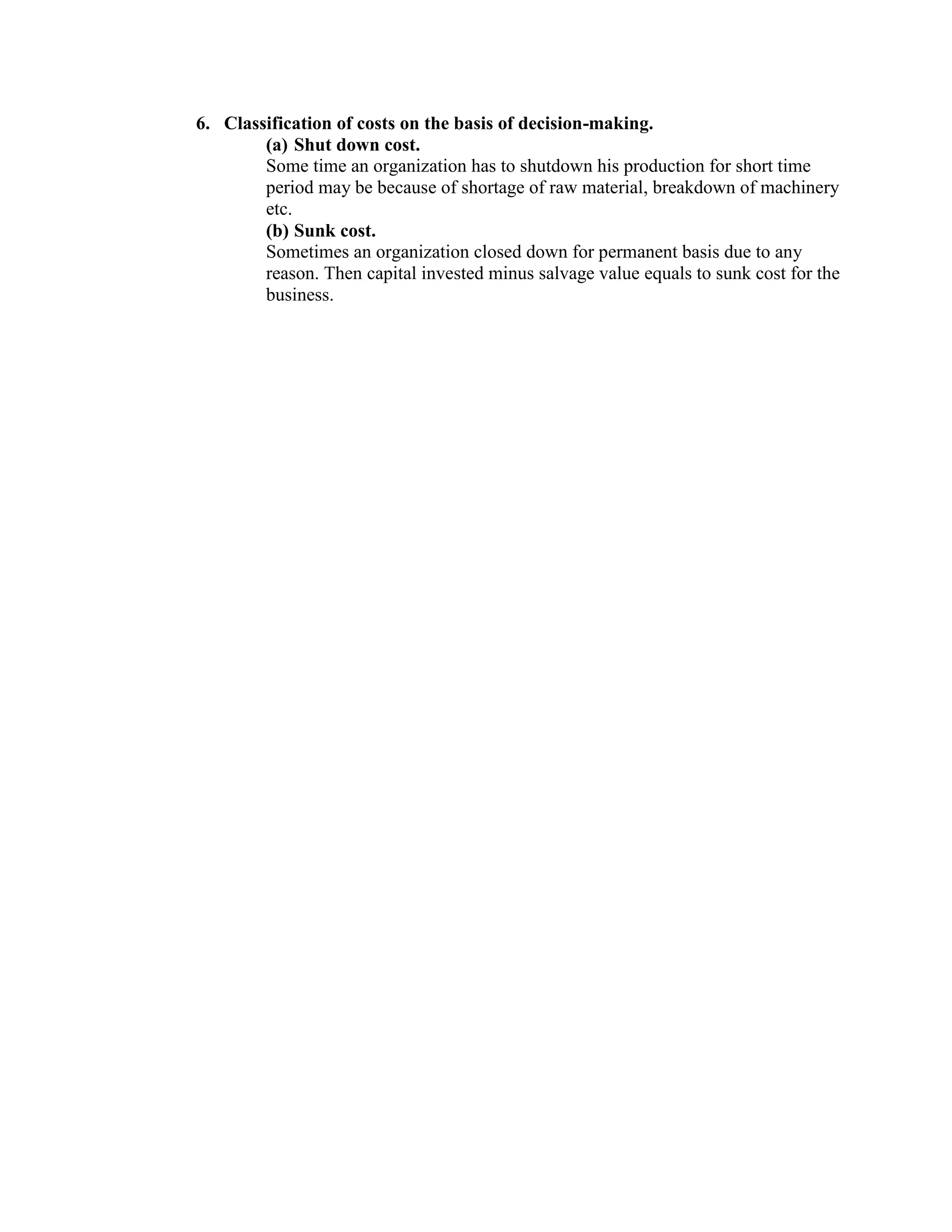There are various ways to classify costs. Costs can be classified based on elements like material, labor, and expenses which can be further divided into direct and indirect categories. Costs can also be classified based on the product into direct and indirect costs. Additionally, costs can be classified based on the level of production as either fixed or variable costs. Classification can also occur based on the function like production, administration, selling, and distribution costs. Other bases for classification include controllability and whether the costs are for decision making like shutdown or sunk costs.


